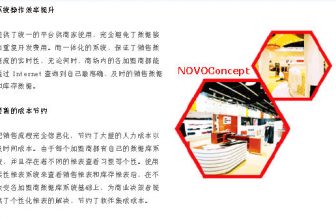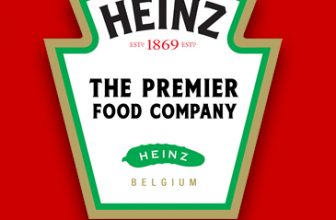
GS1 uses RFID tags to track wine throughout the supply chain
[ad_1]
Standardization organizations Italy GS1 and Hong Kong GS1 use UHF RFID technology that meets the EPC Gen 2 standard to track the entire process of wine shipments exported from Italy to Hong Kong in order to improve the management level of the supply chain. The pilot work has been completed. Based on the successful implementation of the pilot, the two standards organizations concluded that RFID technology can improve the transparency of the supply chain, which not only directly benefits wine producers, exporters and distributors, but also indirectly benefits retailers and consumers. The solution includes not only passive UHF tags placed on wine bottles, cartons, and pallets, but also temperature-sensing smart tags placed on cartons, pallets, and the walls of the Italian manufacturer’s warehouse.
Pilot participants
Participating units in the project include four Italian grape producers (Azienda Agricola Le Macchiole, Ceretto, Barone Ricasoli and Marchesi Antinori), two Hong Kong importers/distributors (Watsons Winery and Summergate Fine Wines) and a Hong Kong wine retailer.
The purpose of the pilot
The purpose of the pilot project is to test the extent to which RFID data sharing between manufacturers in the supply chain can meet the growing market demand. Italy is the world’s third largest wine producer. In 2011, the annual output of wine reached 4.06 billion liters, of which 2.1 million liters were exported to Hong Kong. According to the income report of the US Department of Agriculture, Hong Kong’s wine imports have been increasing, and since 2008 alone, the number of imports has doubled.
The import freight of wine passes through the manufacturer’s warehouse, distribution center, Italian port, Hong Kong port, importer’s warehouse, and finally arrives at the wine retail store. The main test items of the pilot test are the following aspects: whether the data information obtained through RFID tags can provide sufficient basis for the manufacturer to determine that the inventory quantity meets the order demand; to what extent the RFID technology is effective for the wine leaving the Italian distribution center, shipment, departure, and arrival Records are made at the Hong Kong port; and the inventory of Hong Kong importers is estimated.

The green label is Intelleflex TMT-8500 temperature sensing label
Pilot label type
The project conducted pilot trials on eight pallets, including 630 boxes, for a total of 3780 bottles of wine. The project includes two different types of RFID tags: RFID tags with temperature sensing function and ordinary UHF RFID tags. Italian GS1 selects a box of wine from each tray to place temperature labels, and installs Intelleflex TMT-8500 semi-active (battery assisted, BAP) temperature-sensing UHF smart labels on the walls of the warehouse where the wine is stored. In addition, before compressing and packaging the pallets, select one from a group of pallets (two pallets are compressed and packaged in a group) to place a temperature-sensing label. All trays, cartons, and bottles are pasted with a laboratory number UH100 passive UHF RFID tag without temperature sensing function, which conforms to the EPC Gen 2 standard and uses Impinj Monza chips.
Labeling and label reading process
First of all, label a single bottle of wine to be exported to Hong Kong. The tag ID and inventory unit (SKU) are stored in the EPC Information Service System (EPCIS) of GS1, Italy. After single-product-level labeling, six bottles form an assembly box, and then RFID tags with embedded serialized global trade identification codes (SGTIN) are pasted on a box-by-box basis. The above label information is read by the Impinj Speedway Revolution R420 channel reader, and the box label commodity code (SGTIN) is associated with the label ID on the bottle. Then, the pallet is pasted with an RFID tag embedded with a serial shipping box code (SSCC). Next, the pallet passes through another Impinj Speedway reader to read the pallet tag ID and associate it with the label code on the carton and bottle.

UHF RFID tags on bottles, cartons and pallets
The TMT-8500 temperature sensing label is provided by Hong Kong GS1 for Italy GS1, which measures and stores the ambient temperature in a fixed period of time. After the pallet arrives in Hong Kong, read the temperature sensing label on the pallet and the wall of the manufacturer’s warehouse to determine whether the historical data recorded by the label meets the requirements to ensure the quality of the wine.
Before the pallet leaves the production warehouse and is transported to the distribution center, it must pass through the RFID read-write channel to read the data of the temperature sensing tag and the ordinary RFID tag, and store the data in the EPCIS system. When the pallet arrives at the importer/distributor (Watsons Wine Cellar and Summergate Fine Winery), before it is shipped to the retail store, the ordinary label data is read through the CS461 fixed reader of CSL, and the temperature, ID and other data of the temperature sensing label are determined by Intelleflex FMR-6000 fixed reader reads.
The data collected locally in Hong Kong is stored in the ezTRACK system, which is based on the EPCIS standard, and the data information is shared with the Italian GS1.
Pilot results
According to the results of the pilot, GS1 Italy has concluded that the accuracy of supply chain data has been increased from 80% to 100%, and the level of logistics management has been effectively improved.
Emma Chan, product manager of Hong Kong GS1, said: “This is the first pilot application of single-grade EPC RFID tags in the global wine tracking industry, which is intended to improve the transparency of the supply chain.” The pilot project has achieved the desired effect, which can realize the effective tracking of the entire supply chain from the production site to the retailer, provide quality assurance for wine, and improve the management level of inventory management.
[ad_2]






